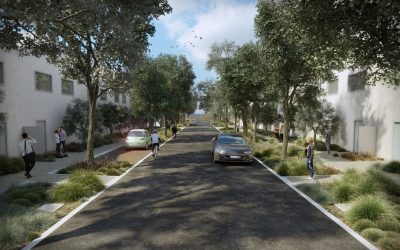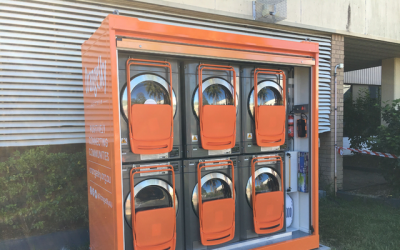Solving Common Stormwater Issues
Easy-to-develop sites are becoming harder and harder to find, and many of our clients are finding stormwater management can be a major determinant of development feasibility. This is not a new issue, but it is becoming increasingly significant. Several years ago the SEQ Council of Mayors found that stormwater matters were one of the largest sources of requests for further information (RFI’s) in the DA process, leading to significant delays and frustrations. Common issues are overland flows, stormwater quality, flood detention and lawful points of discharge.
+ Utilising low impact development and water sensitive urban design
Bligh Tanner has recently facilitated a DA for community facilities on a two-hectare site that drained away from the road. The owner of the private property on the low side of the site was unwilling to grant a discharge consent, and there were no stormwater pipes to connect into on the lower side, nor in the road frontage so a pump-out system (even though they tend to be problematic) was not an option. After being stalled for two years, Bligh Tanner was engaged to design an innovative system using low impact development and water sensitive urban design principles to make sure there was no nuisance runoff from the site and the pre-existing hydrology was maintained for major and minor storm events. The strategy employed rainwater tanks, permeable paving, wicking beds, infiltration, raingardens, distributed site detention and custom designed hydraulic structures. All the water management features were integrated into the site design in an aesthetically pleasing and cost-effective manner. New, soon to be published research on urban hydrology undertaken by Bligh Tanner helped give the local Council the confidence to approve the development.
+ Simplifying flood detention systems
We have also assisted on several sites where we have avoided the creation of unnecessary flood detention systems. All too often, engineers assume that if there is an increase in impervious surfaces on a site then flood detention is specified in stormwater management plans; however, research shows that in many cases, flood detention systems are unnecessary, or can even lead to perverse flooding outcomes downstream by affecting the timing of runoff from a site without regard to what else is happening in the catchment. On one major industrial site, we accessed as-constructed plans for the downstream stormwater network and were able to demonstrate that the design had explicitly catered for upstream development. On another project, we assessed the joint probability of local creek and overland flows to show flood detention would have provided negligible benefit to any downstream properties.
‘In our experience, most local government flood engineers are not fans of uncoordinated and unnecessary flood detention systems, and appreciate being engaged in conversations about where and when its needed’,
says Director Alan Hoban.
‘Considering the cost of detention systems and challenges integrating them into some development sites, whenever flood detention is being proposed, you should always be sure that it’s really necessary’.
Recent changes to rainfall and runoff modelling standards can also mean that analyses undertaken several years ago are no longer valid.







